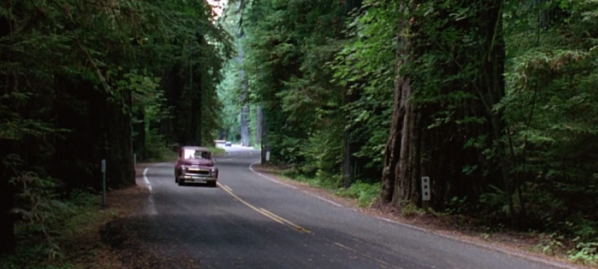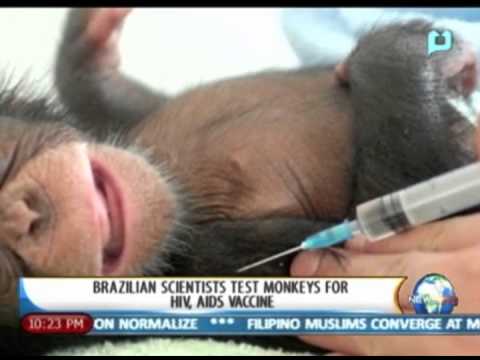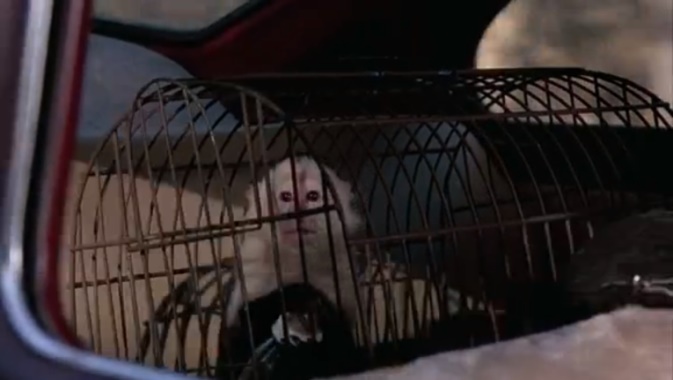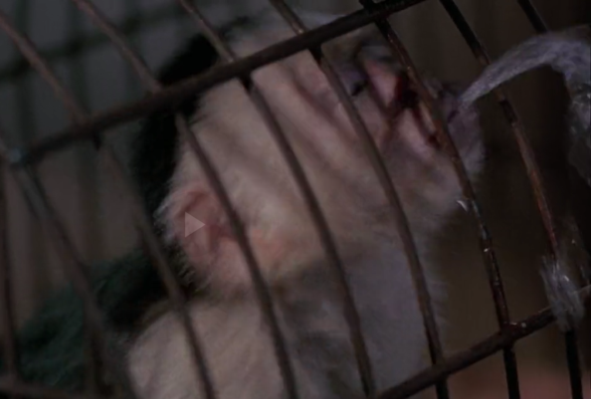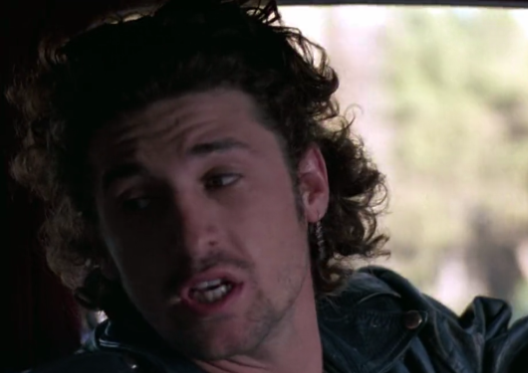Outbreak forewarns of the devastating consequences of animal exploitation, encapsulating them in the scene where Jimbo delivers Betsy, host monkey for the deadly Motaba virus, to a pet shop where she will be sold illegally. The camera employs an establishing shot of Jimbo’s car on a road surrounded by a forest, juxtaposing road and forest in order to represent the boundary between civilization and nature – and by extension humans and animals.
This perceived boundary between humans and animals enables humans to justify animal exploitation since the notion of a definite barrier separating human and animal distinguishes humans from all other animals. This allows humans to believe that they are superior to all non-human animals and therefore are entitled to mistreat them. Furthermore, the boundary prevents humans from feeling guilty for abusing animals since it detaches humans from the animal other to allow humans to claim that, since animals and humans are intrinsically distinct, animals must in turn be less capable of pain and sorrow than humans are.
The proximity of civilization and nature within the above frame represents the dependence of humans upon animals, a concept extremely pertinent to a film where humans need the host monkey in order to cure a virus that is killing mankind. Despite the closeness of civilization and nature, the boundary that divides them remains, as does the boundary that constructs humans as superior to animals since the human exploitation of Betsy in order to extract a cure that saves humanity demonstrates man’s self-proclaimed dominance over animals.
The previous static shot of the road and the forest emphasises the smallness of Jimbo’s car in relation to the magnitude of nature. This demonstrates nature’s dominance over civilization, which in turn undermines the assumption that animals will always remain subordinate to humankind.
The static shot of the landscape without the car that is pictured above encourages the viewer to contemplate the simplicity of a world without human interference, foreshadowing the Motaba virus’s attempt to eradicate mankind.Yet, the man-made road remains prominent in the frame, acting as a cruel reminder that nature can never be liberated from human intervention. After all, the Motaba virus fails to wipe out mankind, which ultimately reasserts man’s supremacy over nature.
The sound of birds tweeting signifies nature’s tranquility, which is subsequently interrupted by the racket of heavy metal music and Betsy’s screeching that pervades Jimbo’s car. Betsy’s noisy screeching suggests that she has been corrupted by humanity since her form of communication has more in common with Jimbo’s ear-splitting music than the peaceful birds outside. Fundamentally, this identifies human interference as detrimental to animals since Betsy’s captivity has dissociated her from her natural habitat.
When Jimbo demands an explanation for her screeching, the camera slowly pans towards Betsy, zooming into her face to capture her anguished expression. This intimate close-up depicts Betsy gazing wistfully at the forest outside, which reveals her despair at her imprisonment since Betsy’s longing gaze at the natural world beyond her cage indicates her desire to be liberated from her cage and released into nature. This close-up challenges animal captivity, urging us to sympathize with a despondent caged monkey by providing us with insight into her vulnerable emotional state.
This scene mixes numerous generic styles in its representation of animals, drawing on melodrama in the sense that the empathetic close-up of Betsy encourages us to react with extreme pity and anger to Jimbo’s mistreatment of her. In contrast, the scene’s soundtrack emulates the horror genre since Betsy’s high-pitched screeching arouses negative emotions of revulsion and discomfort. This confusion of styles represents animals as multifaceted creatures since in one scene alone we are able to respond to Betsy with both sympathy and aversion. Fundamentally, this demonstrates that animals are more complex than the primitive beings that they are often portrayed as because they have the ability to inspire a whole range of emotional responses.
The scene encourages the viewer to respond sympathetically to Betsy through the camera’s gradual movement towards her, the slow, respectful pace of this camera pan demonstrating Outbreak’s gentle and compassionate treatment of animal emotions. Contrastingly, the camera cuts brusquely to Jimbo when he calls Betsy a “savage beast”, rendering him less sympathetic than her through the combination of the abrupt shot transition and his condescending tone. “Savage” and “beast” highlight Jimbo’s attempt to distance himself from Betsy by relegating her to the status of feral animal. By designating Betsy as inherently inferior, Jimbo prevents himself from feeling any remorse for caging her. Essentially, this reveals that humans demarcate non-human animals as intrinsically distinct from humanity in order to justify animal exploitation. Yet, Jimbo has not sufficiently justified his exploitation of Betsy since we know that she is not a savage animal who requires imprisonment; rather, her anguished screeching reveals her to be merely a frightened captive monkey who does not deserve such cruel treatment.
Immediately following Jimbo’s insult, the camera cuts to a close-up of Betsy spitting at him. The decision to position these two shots together challenges the assumption that animals lack complex emotions since this rapid shot sequence shows Betsy directly responding to Jimbo’s insult with vitriol, which implies that animals have sensitive feelings just like humans. Therefore, the human belief that animals are senseless that informs our mistreatment of animals is contradicted by this sequence which affirms that animals do possess an emotional capacity.
Jimbo eventually dies from the Motaba virus that he contracted from Betsy’s saliva, which implies that humans will reap the consequences of animal exploitation. This tragic chain of events encapsulates Outbreak’s use of the disaster movie genre to discourage us from abusing animals since the Motaba virus is presented as a punishment on mankind for our mistreatment of animals. Jimbo’s comeuppance at the hands of the monkey that he abused demonstrates that animals will not sit by for much longer while we exploit them, and one day, they will fight back.
